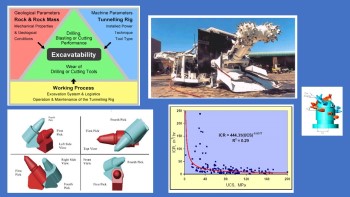[1] G. Korshin, H. Liu, Environmental Science: Water Research and Technology, 2019, 5, 1262-1269.
[2] R. Rahimiyan, S. Zarinabadi, Progress in Chemical and Biochemical Research, 2020, 3, 251-268.
[3] A. Schreiner-McGraw, H. Ajami, Water Resources Research, 2020, 56, e2020WR027639.
[4] Y. Jeong, S. Hermanowicz, C. Park, Water Research, 2017, 123, 86-95.
[5] H. Klammler, J. Jawitz, M. Annable1, J. Yaquian, K. Hatfield, P. Burger, Journal of Hydrology, 2020, 582, 124514.
[6] W. Wang, N. Themelis, K. Sun, A. Bourtsalas, Q. Huang, Y. Zhang, Z. Wu, Waste Disposal & Sustainable Energy, 2019, 1, 67-78.
[7] D. Ford, C. Wolf, Journal of Management in Engineering, 2020, 36, 04020027.
[8] J. Wang, D. Schlenk, J. Gan, Environmental Science and Technology Letters, 2019, 6, 148-152.
[9] H. Klammler, P. Rao, K. Hatfield, Environment Systems and Decisions, 2018, 38, 140-159.
[10] N. Gupta, M. Kluge, P. Chadik, T. Townsend, Waste Management, 2018, 72, 354-361.
[11] R. Anderson, X. Zhang, T. Skaggs, Vadose Zone Journal, 2017,16, 1-9.
[12] R. Rodriguez, D. Contrino, D. Mazyck. Industrial and Engineering Chemistry Research, 2020, 59, 17740-17747.
[13] A. Edalat, E. Hoek, Water (Switzerland), 2020, 12, 1850.
[14] R. Rahimiyan, Progress in Chemical and Biochemical Research, 2020, 3, 329-339.
[15] Y. Yoon, M. Dodd, Y. Lee, Environmental Science: Water Research and Technology, 2018, 4, 1239-1251.
[16] F. Zare Kazemabadi, A. Heydarinasab, A. Akbarzadeh, M. Ardjmand, Artificial cells, nanomedicine, and biotechnology, 2019, 47, 3222-3230.
[17] F. Zare Kazemabadi, A. Heydarinasab, A. Akbarzadehkhiyavi, M. Ardjmand, Chemical Methodologies, 2021, 5, 135-152.
[18] S. M. S. Mirnezami, F. Zare Kazemabadi, A. Heydarinasab, Progress in Chemical and Biochemical Research, 2021, 4, 191-206.
[19] R. Rahimiyan, S. Zarinabadi, Progress in Chemical and Biochemical Research, 2020, 3, 251-268.
[20] R. Rahimiyan, Progress in Chemical and Biochemical Research, 2020, 3, 329-339.
[21] S. Nozariamini, R. Rahimiyan, S. Miryousefi ata, Progress in Chemical and Biochemical Research, 2020, 3, 377-389.
[22] M. Torkaman, F. Z. Kazemabadi, Oriental Journal of Chemistry, 2017, 33, 1976-1984.
[23] R. Rahimiyan, Advanced Journal of Chemistry, 2020, 2, 247-253.
[24] R. Rahimiyan, Advanced Journal of Chemistry, 2020, 2, 239-246.
[25] R. Rahimiyan, Journal of Engineering in Industrial Research, 2021, 2, 95-112.
[26] K.K. Dolisgan, Y. Razisni, Journal of Critical Reviews, 2020, 7 (19), 9899-9906
[27] Y. Raziani, S. Raziani, Journal of Chemical Reviews, 2021, 3 (1), 83-96.
[28] Y. Raziani, S. Raziani, International Journal of Advanced Studies in Humanities and Social Science, 2020,9(4), 262-280.
[29] M. Kayhanian, M. Stenstrom, Journal of Water and Wastewater, 2021, 31, 12-26.
[30] M. Falinski, E. Albalghiti, A. Backhaus, J. Zimmerman, ChemSusChem, 2021, 14, 898-908.
[31] L. Stadler, N. Love, Environmental Science and Technology, 2019, 53, 1918-1927.
[32] J. Lund, Civil Engineering and Environmental Systems, 2020, 37, 183-196.
[33] G. Sahoo, A. Forrest, S. Schladow, J. Reuter, R. Coats, M. Dettinger, Limnology and Oceanography, 2016, 61, 496–507.
[34] S. Hameed, R. Riffat, B. Li, I. Naz, M. Badshah, S. Ahmed, N. Ali, Journal of Chemical Technology and Biotechnology, 2019, 94, 1816-1831.
[35] S. Plata, A. Childress, Desalination, 2019, 464, 51-56.
[36] D. Weissbrodt, M. Winkler, G. Wells, Environmental Science: Water Research and Technology, 2020, 6, 1952–1966.


